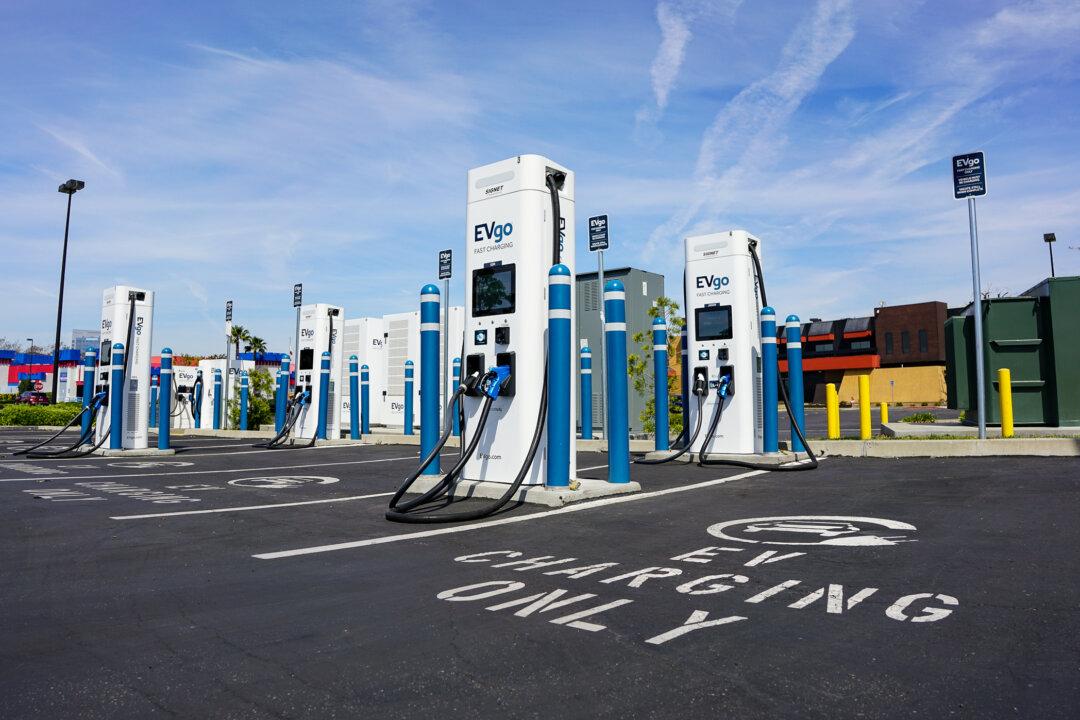The vast majority of the driving public in the United States uses traditional gas-powered vehicles, but the Biden administration is focused on the transportation problems of electric vehicles (EVs), namely the scarcity of charging stations in many areas, rather than tackling record high gas prices.
California has 13,452 EV charging stations, the most of any state, while Alaska has the fewest—just 48—followed by North Dakota with 57, South Dakota with 59, and Wyoming with 62, according to the U.S. Department of Energy.





